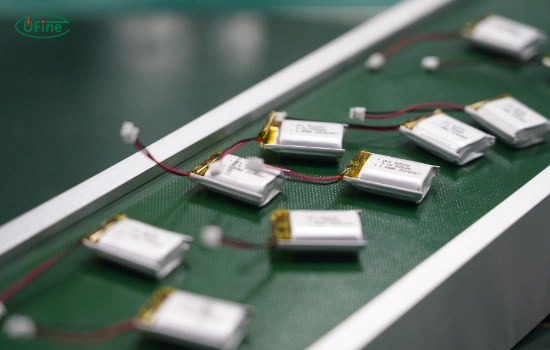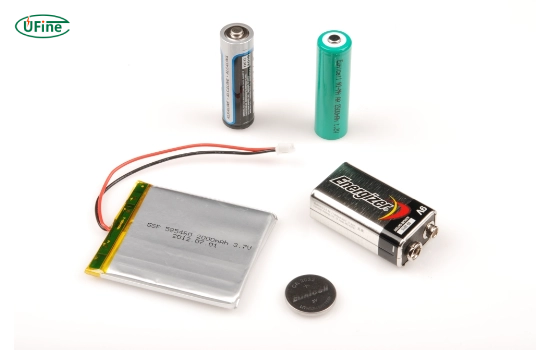In our modern world, batteries are an integral part of our daily lives, powering everything from remote controls to electric vehicles. Standard batteries play a crucial role among the various types of batteries due to their versatility and widespread availability. Understanding standard battery types, sizes, and functionalities can help you decide which device to use. This comprehensive guide will explore everything you need about standard batteries, including their types, applications, maintenance, and safety considerations.
Part 1. What is a standard battery?
A standard battery is a portable energy storage device that converts chemical energy into electrical energy through electrochemical reactions. These batteries are designed to provide a reliable power source for various applications, making them essential for everyday consumer electronics and specialized equipment. “standard battery” typically refers to the sizes and types widely used across multiple devices.
Part 2. Types of standard batteries
Primary Batteries
Designers create primary batteries for single-use applications. Users must replace them when they run out. People commonly use these batteries in devices with low power requirements. Some popular types of primary batteries include:
- Alkaline Batteries (e.g., AA, AAA, C, D): Alkaline batteries are commonly used in household items like remote controls and flashlights. They are known for their long shelf life and reliability.
- Lithium Batteries (e.g., CR2032, CR123A): These batteries offer a higher energy density and power cameras, watches, and other high-drain devices.
- Silver Oxide Batteries (e.g., SR626, SR626W): These batteries provide a stable voltage and high capacity for small devices. People often use them in watches, hearing aids, and other compact electronics.
Secondary Batteries
People can use secondary or rechargeable batteries multiple times, making them more economical and environmentally friendly in the long run. They are ideal for high-drain devices and applications. Common types include:
- Lithium-Ion Batteries (e.g., 18650, 21700): Widely used in smartphones, laptops, and electric vehicles, lithium-ion batteries are known for their high energy density and lightweight design.
- Nickel-metal hydride (NiMH) Batteries (e.g., AA, AAA): These batteries are commonly used in rechargeable household items like digital cameras and cordless phones.
- Lead-Acid Batteries (e.g., car batteries, deep-cycle batteries): Often found in vehicles and backup power systems, lead-acid batteries are known for their durability and ability to deliver high currents.
Part 3. Standard battery sizes and designations
Standard batteries come in various sizes, each designated by a specific code that indicates its dimensions and chemistry. Some of the most common battery sizes include:
- AA (LR6): One of the most popular battery sizes, used in various devices, from toys to remote controls.
- AAA (LR03): Smaller than AA batteries, AAA batteries are commonly found in compact devices like TV remotes and flashlights.
- C (LR14): These batteries are used in more extensive devices, such as portable radios and toys.
- D (LR20): D batteries are often used in high-drain devices like flashlights and large toys.
- 9V (6F22): 9V batteries, commonly used in smoke detectors and guitar pedals, provide a higher voltage in a compact size.
- CR2032: This lithium coin cell battery is widely used in watches, calculators, and small electronic devices.
Part 4. Battery capacity and voltage explained
Battery capacity refers to the energy a battery can store, typically measured in milliamp-hours (mAh) or amp-hours (Ah). Higher-capacity batteries can power devices for more extended periods. Voltage, measured in volts (V), indicates the potential energy difference between the battery’s terminals. Different battery chemistries have varying nominal voltages:
- Alkaline Batteries: 1.5V per cell
- Lithium Batteries: 3V per cell
- Nickel-Metal Hydride Batteries: 1.2V per cell
- Lead-Acid Batteries: 2V per cell
Understanding capacity and voltage is crucial when selecting a battery for a specific application, as they directly affect the device’s performance and longevity.
Part 5. Common applications of standard batteries
Standard batteries are used in a myriad of applications, including:
- Consumer Electronics: Devices such as remote controls, cameras, and portable speakers rely heavily on standard batteries for power.
- Toys: Many battery-operated toys use standard batteries, making them easy to replace and maintain.
- Medical Devices: Equipment like glucose meters and portable oxygen concentrators often utilize standard batteries for reliable operation.
- Automotive Applications: Standard batteries, particularly lead-acid types, are essential for starting vehicles and powering electrical systems.
- Emergency Equipment: Smoke detectors and flashlights typically use standard batteries to ensure they function when needed most.
Part 6. Understanding battery ratings
When shopping for batteries, you may encounter ratings that indicate their performance. Key ratings include:
- Capacity Rating (mAh): Indicates how much energy the battery can store. Higher mAh ratings generally mean longer usage times.
- Discharge Rate: This rating indicates how quickly a battery can release its stored energy. High-drain devices require batteries with higher discharge rates.
- Cycle Life: This rating indicates how many charge and discharge cycles a rechargeable battery can undergo before its capacity significantly diminishes.
Part 7. Battery care and safety: essential tips and common myths
Battery Safety Considerations
Safety is crucial when handling standard batteries. Follow these tips to ensure safe use:
- Avoid Mixing Batteries: Mixing different types, brands, or chemistries can cause leakage or rupture. Always use the same kind of battery in a device.
- Proper Disposal: Dispose of batteries according to local regulations. Many areas offer recycling programs to prevent environmental harm.
- Storage Conditions: Store batteries in a cool, dry place away from heat sources. Extreme temperatures can affect their performance and safety.
- Check Expiration Dates: Inspect the expiration date before use. Expired batteries may leak or not work correctly.
Battery Maintenance Tips
To extend battery life and maintain performance, keep these maintenance tips in mind:
- Remove Batteries When Not in Use: If storing a device for a long time, remove the batteries to prevent leakage.
- Keep Contacts Clean: Regularly check and clean battery contacts to ensure good connections and avoid corrosion.
- Use the Right Charger: Use the recommended charger to prevent damage and ensure efficient charging for rechargeable batteries.
Common Myths About Standard Batteries
Debunking myths can help you understand battery care better:
Myth 1: All Batteries Are the Same
Batteries differ in chemistry, size, and capacity. Using the correct type is essential for device performance.
Myth 2: You Can Recharge Any Battery
Rechargeable batteries are the only ones meant for recharging. Attempting to recharge non-rechargeable batteries can be hazardous.
Myth 3: Batteries Lose Charge Over Time
Batteries can lose charge when unused, but proper storage helps maintain their performance.
Part 8. FAQs
-
What is the lifespan of standard batteries?
The lifespan of standard batteries varies based on their type, usage, and storage conditions. Alkaline batteries typically last 3-5 years, while rechargeable batteries may last 2-3 years, depending on usage. -
Can I use rechargeable batteries in devices designed for alkaline batteries?
Yes, you can use rechargeable batteries in devices designed for alkaline batteries. However, rechargeable batteries have a lower nominal voltage (1.2V vs. 1.5V), which may affect performance in some devices. -
How do I know when to replace my batteries?
Devices that don’t function properly, dimming lights, or slower performance are signs that batteries need replacing. If a device shows these symptoms, checking and replacing the batteries is a good idea. -
Are there environmentally friendly options for standard batteries?
Yes, some manufacturers produce environmentally friendly batteries, such as rechargeable NiMH batteries, which can be reused multiple times, reducing waste. Additionally, many areas offer battery recycling programs. -
What should I do if a battery leaks?
If a battery leaks, handle it with care. Wear gloves, and clean the area with a damp cloth. Dispose of the battery according to local regulations, and avoid touching the leaked material directly.
Related Tags:
More Articles

How to Choose the Best Floor Scrubber Battery for Commercial Cleaning?
Selecting the ideal floor scrubber battery ensures a long runtime, rapid charging, and minimal maintenance for efficient commercial cleaning operations.
Battery for Blower vs Battery for Leaf Vacuum: Which One Should You Choose?
Battery for blower vs leaf vacuum—learn the key differences in power, fit, and runtime to choose the right battery for your outdoor tool needs.
How to Choose the Right Battery for Blower?
Choosing the right blower battery? Consider voltage, capacity, chemistry & usage. This guide helps match the best battery for peak performance.
How to Choose the Best Insulated Battery Box for Lithium Batteries?
Choosing the Best Insulated Battery Box for Lithium Batteries? Discover key factors such as size, material, and safety for optimal protection and performance.
7 Critical Elements on a Lithium Battery Shipping Label
What must be on a lithium battery shipping label? Learn 7 key elements to ensure safety, legal compliance, and correct handling across all transport modes.






